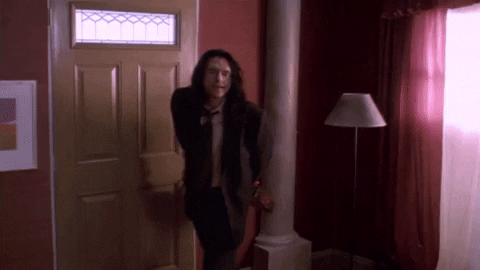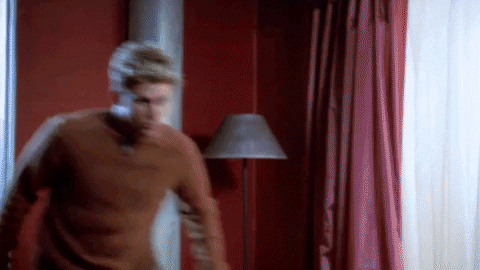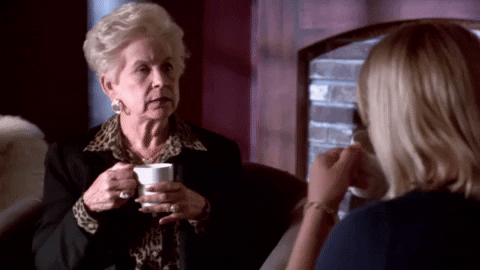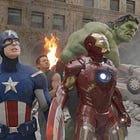The Room as Late-Capitalist Critique
On class anxiety, gentrification, and spoons
Last month, The Room celebrated 20 years since its theatrical release. Over the last two decades, Tommy Wiseau’s cult classic has become known as many things: The Rocky Horror Picture Show for Millennials. The film-within-a-film whose production is dramatized in The Disaster Artist. “The Citizen Kane of bad movies.”
What makes The Room unique among the myriad so-bad-it’s-good films I’ve experienced is its sincerity. Most such B movies are camp, winking at their midnight audiences to make it clear that the creators are in on the joke. The Room has no such pretensions. The bad acting, ridiculous dialogue, and incoherent plot are not ironic; the gratuitous sex scenes and nonstop non sequiturs represent a genuine (albeit strange) artistic vision. Even after clumsily rebranding the movie as a black comedy, it’s not clear whether Wiseau — the writer, director, producer, star, and lifeblood of the film — actually understands its cult following. Frankly the reaction would seem mean-spirited if not for how excitedly Wiseau still travels around the country to host screenings with meet-and-greets and Q&As.
It had been an uncharacteristically long time since I’d seen the movie before I went to a screening for the 20th anniversary. The clarity provided by this fresh perspective (along with watching it in the early evening instead of at midnight) granted me an epiphany that had never occurred to me before: The Room is a biting critique of late-stage capitalism.
When The Room was released in 2003, neoliberalism was near its acme. The Cold War was over. The left flank of Western politics had been coopted by the milquetoast centrism of Clinton and Blair. The reactionary wing of those disaffected by this equilibrium had not yet congealed into a substantive movement of bigoted pseudo-populist nihilism. Privatization, deregulation, and open markets ruled the day. The world was flat and history was at its end. It’s against this backdrop that Wiseau delivered an incisive and prescient look at those whom the modern free market was leaving behind.
I imagine most people who aren’t fans of The Room have already closed this tab anyway, but spoilers abound below if you care about such things for a two-decade-old movie with no plot.
The film’s protagonist, Johnny (Wiseau), outwardly embodies the American Dream. Johnny moved to San Francisco in his youth without connections, accessible money, or even a place to live. By the time we meet him a few years later, he has a tony city apartment, an established career as a banker, and a routine of coming home with gifts for his fiancée, Lisa (Juliette Danielle): A self-made man. Yet the film shows that the trappings of his comfortable life are largely for show. “The Room” is a nearly accurate description of Johnny and Lisa’s apartment, a space so cramped that having seating for multiple people means blocking the TV with an armchair. The dramatic spiral staircase is flimsy enough to be dented. They have more picture frames than they do art, so the living room is famously adorned with stock photos of spoons. The façade of upward mobility may still be attainable, but achieving true stability in today’s society is far harder than it used to be.
Johnny’s main concern throughout most of the movie is how undervalued he feels at work. The bank’s refusal to promote him as his ideas save them bundles weighs on him as much as the revelation of Lisa’s infidelity — even after he learns about the climactic conflict of the movie, he still makes time to roll his eyes at his firm’s continued growth. Frustration with one’s economic standing is a tale as old as time, but there’s a distinct 21st-century flavor in the implication that Johnny sees this raise as a crucial step in buying a house, a modern luxury that was once a hallmark of American middle-class life. Meanwhile, Lisa goes through a clearly contemporary professional crisis of her own as finds the tech-sector job market tougher than advertised.
Whatever money they do have, a substantial portion of it goes to Denny (Philip Haldiman), their neighbor-slash-friend-slash-son. Johnny paying for both Denny’s rent and his college tuition is the ultimate demonstration of his trademark largesse. It also begs the question of how Denny would get by if not for Johnny’s above-and-beyond generosity. Why, in the wealthiest country in the world, does a student have to rely on the kindness of private citizens to keep a roof over his head? Even with Johnny covering his major expenses, Denny struggles to stock his pantry and gets in completely over his head selling drugs to pay off his debts. The other students in the movie, Michelle (Robyn Paris) and Mike (Mike Holmes), apparently go to Johnny and Lisa’s apartment to make out so often that it doesn’t faze their hosts, suggesting that neither of them can afford an apartment with even a modicum of privacy on their grad-school stipends.
Where the characters spend their non-amorous time is also telling. Friends wander in and out of Johnny and Lisa’s apartment like it’s Grand Central Station largely because there’s nowhere else to hang out. Privatization and gentrification have hastened the decline of public spaces, particularly in cities like San Francisco. If Johnny and his pals don’t want to drive to play football in the park, they must resort to playing catch in a back alley or dribbling a basketball on the roof. Peter (Kyle Vogt) is so bored that he hangs out on the patio of a residential building where (as far as we know) he doesn’t even live. Aside from Johnny’s apartment complex, the only place in the entire movie where the characters sit together is a café where the server is annoyed when they order only beverages.
The film’s frequent establishing shots drive home the separation between the idea of San Francisco and the non-wealthy’s lived experience. The subjects of the extended camera pans fall into two clearly defined categories: majestic landmarks like the Golden Gate Bridge and the Painted Ladies, and mundane street scenes like a double-parked mail truck and traffic bottlenecked behind a trolley. Over the course of the movie, this visual language subtly communicates the city’s widening class-stratification. You don’t fully appreciate its cumulative power until you see Johnny’s silhouette in the foreground of the Palace of Fine Arts or the Union Square Disney Store and realize you’ve been conditioned to see him as out of place.
Two characters in The Room’s orbit lead more privileged lives, each representing a different generation of wealth. Lisa’s mother Claudette (Carolyn Minnott) is Wiseau’s stand-in for East-Egg old money. A recurring theme of her conversations is her complete inability to comprehend how the less-fortunate live. She insults Denny when he asks Lisa to borrow some ingredients with a wonderfully scornful “Doesn’t your home have a kitchen?” After a family property skyrockets in value — The Room’s most-overt allusion to the economic trends of the early 2000s Bay Area — Claudette scoffs that her brother (“that jerk Harold!”) wants to revisit their inheritance arrangement. She later complains when Johnny demurs about subsidizing the down payment for her friend’s house, as if that were a remotely reasonable thing to expect a person in his financial situation to do.
Finally we come to Mark (Greg Sestero), Johnny’s best friend (as various characters remind us literally seven different times) who has an increasingly serious affair with Lisa throughout the movie. He makes good money, as he blurts out in the middle of an unrelated conversation — a stupid comment he should have left in his pocket — but never seems to have work obligations. At the very least he has time for repeated booty calls during normal business hours while Johnny is at the office. Given the setting, my inference is that Mark is a startup founder or venture capitalist in Silicon Valley. He certainly fits the archetype, even two decades later: Charming charisma, thin skin for criticism, aggressively casual fashion sense. (People are very strange indeed.) The metaphor for the entrepreneurial-disruptor class’ disinterest in accountability at the end of the movie is not very subtle. Just as election interference and self-driving cars crashing are the cost of doing business, Mark straddles the dead body of the man he betrayed and immediately absolves himself of any fault. With literal blood still on his hands (warning: gory imagery), he insists that Lisa bears sole responsibility for Johnny’s death.
My longstanding theory of pop culture is that the best movies and TV shows are also a little bit stupid. The original Star Wars movies are great because Luke is so annoyingly whiny, not in spite of it. Rolling your eyes at 24’s cartoonish anti-regulatory worldview, The Dark Knight’s ham-fisted Patriot Act apologia, or The Departed’s ridiculous Boston accents keeps you grounded enough to appreciate the surrounding tension instead of growing numb to it. The Sopranos wouldn’t be the same if it weren’t a little ambiguous whether the more-cartoonish characterizations reflect the performative nature of the mafia world, or if some of the cast thought doing bad imitations of their paesan uncles qualified as acting.
I believe the inverse applies to The Room. Total incoherence, like AI Seinfeld with “make sense mode” off, is not interesting; utter incompetence would make laughing feel cruel. The Room’s enduring appeal is in being just polished enough to enjoy making fun of it.
The film’s inanity is intertwined with flashes of genuine autuership: Mike and Michelle’s goofy romance, Chris-R’s menacing presence, the way the camera lingers on a dramatic angle of dress shoes marching on pavement. A gun introduced as an apparent non sequitur ends up making Chekhov proud. In an age when movies are saturated with plot movements and franchise table-setting, Wiseau’s fascination with the tangential minutia of everyday life is refreshing. However clumsily the characters are written, they are fleshed out enough to discern that Lisa had an affair with Peter prior to the events of the movie.
Daring to take the film seriously also reveals its sharp political themes. The Room paints a stark picture of economic inequality and its tragic consequences, an unflinching critique of modern capitalism that remains as relevant today as it was 20 years ago. Still, amidst the cynicism, Wiseau offers a message of hope. “If a lot of people loved each other,” Johnny preaches, “the world would be a better place to live.”







